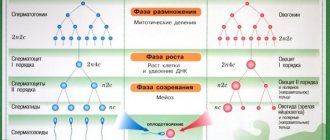Psychological structure of personality
The psychological structure of personality is intended to present a single personal picture that interacts with the microclimate that does not go beyond its own boundaries.
To define the concept of personality and its characteristics, there are scientific approaches for this. They are based on various techniques, sometimes conflicting with each other, or mutually complementing each other. By personality we mean not just a subject, but a person consisting of body and blood, who is the bearer of consciousness, possessing the abilities contained in him, called cognition. A person can experience and empathize, the entire world around him can transform, he can come into contact with things and people in the surrounding world.
When starting a conversation about personality, we mean its active behavior, awareness, responsible approach to any business, transformation of realities, adaptability. And this is not a complete list of possessing qualities that together help to react to current events, as well as take part in them and even change their course.
Introduction
At the turn of the 19th and 20th centuries in psychology, at that time still a very young scientific discipline, a bright and significant direction arose that continues to exist and develop to this day - psychoanalysis.
The founder of psychoanalysis was the brilliant scientist, Austrian neurologist and psychiatrist Sigmund Freud (1856-1939). The fundamental difference between S. Freud’s theory and other areas of psychology of that time was the use of such an approach to the subject of science, in which the most important structural component of the psyche was its unconscious component (the unconscious, or “Id”). In other areas of psychology, the unconscious sphere of personality was not given much importance, or its existence was completely ignored. S. Freud's psychoanalytic theory, striking in its depth, had a highly significant impact on the scientific community contemporary to its author and even on some aspects of the development of civilization, especially on art. Many followers of S. Freud appeared - adherents of the theory of psychoanalysis.
However, some students of the founder of this theory did not share his views in everything. The most talented of them include the Austrian ophthalmologist and psychiatrist Alfred Adler (1870-1937) and the Swiss psychiatrist Carl Gustav Jung (1875-1961). Inspired by the theory of S. Freud, these scientists, based on it, created their own directions of psychoanalysis: A. Adler called his theory individual psychology, C. G. Jung - analytical psychology.
Due to the fact that C. G. Jung was a highly educated person and had extensive knowledge in various fields of scientific knowledge, the origins of analytical psychology lie not only in the psychoanalytic theory of S. Freud, but also in philosophy, mythology, cultural studies and many others.
This work is devoted to the study of analytical psychology by C. G. Jung.
Personality structure: philosophy
By personality we mean a specific person who has unique mental, volitional, emotional and physical properties that are unique to him. The emergence and development of personality took place over a huge period of time, determined by the socio-historical development of mankind, as well as as a result of the labor process.
The psychological and social essence of a person is determined by his belonging to the social environment with his inclusion in social relations.
Personality is a social entity, a subject of cognition, an active figure in the development of society. The characteristic features of a person are determined by his consciousness, participation in the performance of social roles, and useful activities for society.
Also, one of the qualities of a person is determined by her individuality, that is, a set of peculiar and unique psychological differences in character, temperament, the course of development of the psyche (perception, thinking, memory, speech, feelings, will, etc.), as well as in the motivating sphere.
But be that as it may, a person is nothing more than a product of his own actions and participation in the economic relations of his environment. The very process of studying personality is determined by historical research, its formation when it finds itself in certain conditions of society, as well as the social system.
Gender, name, profession and other role functions
The first thing that comes to mind for most is: “I am a person”, “I am a woman (man)”, “I am a businessman (turner, baker)”, “I am Tanya (Katya, Alexey)”, “I am a wife ( husband, daughter)”, etc. These are certainly funny answers. Your individual, unique “I” cannot be defined in general terms. There are a huge number of people in the world with the same characteristics, but they are not your “I”. Half of them are women (men), but they are not “I” either, people with the same professions seem to have their own “I”, not yours, the same can be said about wives (husbands), people of different professions, social status, nationalities, religions, etc. No affiliation with any group will explain to you what your individual “I” represents, because Consciousness is always personal. I am not qualities, qualities only belong to our “I”, because the qualities of the same person can change, but his “I” will remain unchanged.
Personality structure according to Rubinstein
We must not lose sight of the fact that Rubinstein laid the foundation for a special methodological basis that examines the problems of human psychological development. He categorically denies:
- idealization of personality;
- functional analysis, that is, division into separate functions;
- isolation from life;
- bringing the individual to awareness.
According to Rubinstein, a personality and its activities depend on relations in society and the specific situation in its social existence, the dependence of its consciousness on the actions taken. According to S. L. Rubinstein, the formation of a person’s personality occurs as a result of interaction with the environment, including people.
According to the psychologist, the personality core consists of motives for conscious actions, but personality is also characterized by unconscious tendencies or motivations. The personality structure according to Rubinstein differed in personal temperament, self-awareness, abilities, character and orientation.
Jung's Major Archetypes
It is logical that the number of archetypes should be equal to the number of typical (repeating, similar) situations in our lives, from which it is clear that we are talking about virtually unlimited quantities. However, Jung highlighted only a few of the most important of them: the mask (persona), anima, animus, shadow and self.
It is this set of archetypes that takes a special part in the formation of personality, largely determining its structure (see figure).
MASK (person). One of the most important archetypes for a person, the name speaks for itself. The mask is that part of our consciousness that is addressed to society. It is through it that interaction with society occurs. For each social situation, each person has his own type of mask. The function of the mask is to imitate a socially acceptable image of ourselves, as well as to hide what we really are. The mask is a very important part of our personality, which is responsible for a successful social life, but, like any useful thing, it carries within itself both good and evil. Often the mask begins to play such a big role for most of us that we completely forget who we really are, which means that we fall under the power of a skillful tool that quietly enslaves us. From what has been said, it is easy to conclude that the MASK (PERSONA) is an archetype that is in the process of constant change, the essence of which is to constantly adapt to new circumstances.
SHADOW. What is responsible for the “primitive” animal part of our personality, the shadow, is our natural impulses (selfish, sexual, aggressive), which, for various reasons, are not accepted either by society or by ourselves. Accordingly, we tend to suppress its natural manifestations. However, Jung himself considered the Shadow to be twofold in essence. On the one hand, it presents obvious problems for the individual, on the other hand, it is a powerful source of universal energy that can be used for “peaceful purposes”, for example, directing its energy into a creative direction .
According to Jung, both the Shadow and the Persona are special archetypes and are a kind of basic structure (core) in the collective unconscious. The reason for this view is probably that these archetypes, unlike the others, are responsible for the self-awareness of the individual, and therefore, both one and the other manifest themselves both in the personal unconscious and directly in consciousness. The role of the Ego is to create there is a certain semblance of harmony between the Shadow and the Persona. This means directing the enormous energy of the Shadow in the right direction. On the other hand, this means using the Persona as a practical tool for living in society, without identifying with it.
ANIMA and ANIMUS. These two archetypes are associated with the images of the Father and Mother, man and woman. For a man, the Anima image is an ideal, associated, on the one hand, with the mother, on the other, carrying the unconscious feminine side of male nature, as well as ideas about the ideal woman, which to a large extent influence in the search for a partner. Typical manifestations of Anima in a male character are excessive emotionality, sensuality, irrational impulsiveness. Ignoring the feminine side of one’s nature leads to a certain disharmony in the development of a male personality and the loss of certain opportunities.
For a woman, the Animus is the image of an ideal man, partner, father, as well as the masculine part of her personality. Manifestations of the animus in a female character are aggressiveness in society and family, the desire for dominance, independence, logic. Just as in the case of a man, ignoring or rejecting the male part of the personality leads to one-sided development.
SELF. (I am who I am). Not manifested under ordinary conditions, this archetype becomes the center of the entire personal structure after a special act, which Jung called INDIVIDUATION. Individuation of a personality occurs when all its internal structures, which are in ordinary conditions in antagonism, come into balance and are united in one integral harmony. Only then does the Self become the defining archetype of personality. Jung believed that self-actualization of the Self is a very rare phenomenon, nevertheless, it is the main goal of human existence. According to Jung, the Self is the embodiment of our natural religiosity and subconsciously pushes a person to develop inner harmony.
Personality structure according to Platonov
If we turn to Platonov’s approach, then he implies personality as a kind of biosocial hierarchical structure. They identified the following substructures:
- having experience consisting of knowledge, skills and abilities;
- presence of direction;
- the presence of individual abilities expressed in various reflective forms, for example, sensation, memory, perception;
- Possession of combined behavioral properties.
The disadvantages include the interpreted general structure of personality as some combined biological and socially determined distinctive features.
Complex of knowledge, skills and abilities
can be attributed to the fundamental links that influence the determination of a person’s work activity. In the labor process itself, not only the appearance of the product of labor occurs, but also the formation of it itself in labor activity. Labor activity is carried out in conjunction with perception and temperament.
Presence of perception
, is sensory awareness in relation to some object or phenomenon.
- To feel means to reflect a separate sensory quality.
- Memory is a mental process that records, stores and subsequently reproduces past experiences.
- Thinking is a process of cognitive actions that are characterized by a generalized and mediated mirror-reflecting reality.
Presence of temperament
shows the peculiar individuality of the properties of the psyche, which determines the active mental activity of a person, the manifestation of which is always recorded to the same extent.
- Character combines stable individual personality traits, which are the result of activity and communication.
What else do psychologists advise?
According to experts, when a woman asks whether a man loves her, she may be hiding certain hidden psychological problems.
There are two similar problems:
- she has low self-esteem, lacks self-confidence;
- at the subconscious level, the girl believes that it is she who is to blame for the problems in her relationship with her beloved guy.
In the first situation, you should resort to self-improvement. However, this is not done for the sake of a loved one, not for the environment, and not for the reason that this is the advice of a qualified psychologist. She must do it personally for herself and on her own initiative.
Only when you change your sense of self will the constant doubts, comparisons of yourself with others stop, and there will be no attempts to appear better to others. If uncertainty goes away, then there will be no point in posing the question under consideration.
In the second case, psychologists try to find out what exactly is the reason for such a destructive attitude. Perhaps the culprit is excessive emotionality, which leads to conflict situations, or the acquired negative life experience is taking its toll.
Sometimes even the fact that a woman completely “dissolves” in her beloved does not always mean that the relationship between them is harmonious. Analysis of a specific case occurs on an individual basis.
In 7 out of 9 cases, “testing” a loved one leads to the collapse of the relationship
With a certain periodicity, there is a desire to check up on your young man, but you should not joke with such methods. Sometimes the manifestation of such an initiative, even if such a “test” is successfully passed, destroys even the couple’s relationship built over the years.
Most men will take this as a serious insult and a woman showing confidence in his unreliability, especially if the feelings are truly sincere. You should be extremely careful with such methods, otherwise you will lose everything.
Personality structure according to Freud
Freud's personality structure consists of three components:
- “It” is the most primitive matter, covering phenomena of an innate and subordinate nature to the object of pleasure and not at all aware of the realities.
- “I” is a consciousness that follows the rule of reality, creating mechanisms of adaptation to the environment.
- The “super-ego” is a resource that reproduces moral and religious feelings, acts as a controlling and punishing agent, and is the final product of influence that comes from another mass of people. Appears from early childhood. “It” conflicts with the “Super-I”.
List of protective mechanisms:
- deny everything and everyone;
- suppress internal impulses coming from the “Super-I”;
- a rational approach that reasonably justifies any actions that contradict internal principles;
- form reactions when the expression of an unpleasant motive by people is carried out at the expense of a motive in the opposite type;
- the formation of projection - when one’s shortcomings are attributed to other people;
- the formation of intellectualization - when a threatening situation arises, a person wants to avoid it through abstraction;
- replace - partially satisfy an unacceptable motive at the expense of a morally acceptable method.
Personality structure: sociology
The structure of personality in sociology combines the objective and subjective properties of the subject, which arise and function during various life activities, while influencing him by the communities and associations with which a person comes into contact. Based on this, the social structure of the individual is characterized by independent activity and interaction with others like themselves, which focuses the understanding of the object of life activity. It is impossible to analyze the structure of personality without analyzing the forms of its functioning.
A person’s social attitudes are determined by his value orientations, which serve as a regulator of his behavior. Due to them, the fundamental interests of the individual are reflected and the strategic direction in his activities is determined. Their manifestation occurs on the object’s life position, worldview and moral principles. The formation of holistic orientations occurs due to the acquisition by the object of social skills, the list of which includes social, moral, political, aesthetic ideals, as well as immutable regulatory requirements that are presented to the object as an obligatory component included in the social community.
S.L. Rubinstein. About the personal approach Added by Psychology OnLine.Net 07/05/2008 (Edit 07/05/2008) All mental processes, with the study of which our analysis of the mental content of human activity began, occur in the individual, and each of them in its actual course depends on it. The dependence of mental processes on personality as an individual is expressed, firstly, in individual differential differences. People, depending on the general makeup of their individuality, differ in the types of perception and observation, memory, attention (in the sense of switchability), etc. Individual differences manifest themselves in the very content of what is perceived, remembered, etc., which is especially pronounced in the selective nature of remembering and forgetting. The dependence of mental processes on personality is expressed, secondly, in the fact that, as our analysis has shown, they, without having an independent line, depend on the general development of the personality. When studying emotions, it was found that a person’s feelings in one period or era of his life are not always a continuous continuation, more or less complicated, of his feelings in the previous period. When a certain period or era of our life irrevocably fades into the past and is replaced by a new one, then at the same time the entire structure of emotional life is replaced. The connection of feelings with a person’s present attitudes is more significant than their connection with past feelings. Since continuity remains between new and old feelings, it is mediated and conditioned by the connection with the developing personality. The same is no less applicable to the organization of volitional life and to any analytically isolated side of the psyche. The fact that a person’s mental processes are manifestations of personality is expressed, thirdly, in the fact that in a person they do not remain only processes that occur by themselves, but turn into consciously regulated actions or operations, which the personality seems to take possession of and which it directs. to solve the problems facing her in life. Thus, the process of perception turns in a person into a more or less consciously regulated process of observation, and this is where the essential feature of truly human perception is manifested. Likewise, in human memory, involuntary imprinting gives way to conscious remembering and turns into an organized activity of learning, just as involuntary recollection gives way to intentional recollection. Thinking in its essence is always a set of operations consciously aimed at solving problems. Attention, in its specifically human form, turns out to be voluntary, i.e. consciously regulated attention. It, in essence, is only a manifestation of the will, which is expressed in the fact that all human activity turns into actions consciously regulated by the individual. Thus, all human psychology in the interpretation that was given to it here is the psychology of personality. Personality does not act only as the completion of a psychology course. It goes through the entire construction, from beginning to end. It forms the basis that internally determines the interpretation of the human psyche as a whole. All mental processes constitute the mental content of a person’s life. Each type of mental process contributes to the richness of her inner life. It is worth paying attention to what a huge place music can occupy in the life of a musical person and to what extent musical impressions can fill and enrich his life in order to understand what great potential wealth for the spiritual life of an individual lies in his sensitivity. It is enough to take a closer look at the life of any blind person to be convinced of how the loss of at least one sphere of sensations is reflected in the entire life and mental appearance of the individual, right down to his characterological traits (causing wariness, turning into composure, then into suspiciousness, etc.). P.). This applies, of course, not only to sensitivity, but no less to all other mental phenomena. For example, memory preserves and reproduces our past in memories, often still warmed by the warmth of personal experience; reflecting in consciousness our path of life in the successive connection between our “today” and our “yesterday”, it significantly determines the very unity of consciousness. But it is still necessary to distinguish from mental processes the mental properties of a person, those traits that, while determining the direction of the personality, its abilities and character, form the basis of the personality itself and determine its psychological appearance. Mental processes and mental properties of a person are actually inseparable from each other. On the one hand, all mental processes in their specific course depend on the properties and characteristics of the personality, starting with sensations and perceptions, which in the fullness of their content and actual course depend not only on the activity of a supposedly isolated receptor, but on the properties of the personality itself, on her receptivity and impressionability, etc.; on the other hand, each type of mental process, fulfilling its role in the life of an individual, in the course of activity transforms into its properties. Therefore, when studying any category of mental processes - cognitive, emotional, volitional - we moved from studying general patterns to those individual typological features that appear in this area. Individual typological characteristics in perception, memory, thinking, imagination, attention, not to mention individual typological characteristics in the emotional and volitional sphere, are already mental properties and personality characteristics in the field of perception, thinking, etc., such as then: receptivity and impressionability, observation, thoughtfulness. Reasonableness, emotional excitability and stability, initiative, determination, perseverance, etc. Thus, already within the analytical study of mental processes, there has been a transition taking place with internal necessity to the study of the mental properties of the individual. Now they should become the subject of special study. Mental properties are not an initial given; they are formed and developed in the process of individual activity. Just as an organism does not develop first and then functions, but develops while functioning, so a personality does not develop first and then begins to act: it is formed, acting, in the course of its activity. In activity, personality is both formed and manifested. Being, as a subject of activity, its prerequisite, it is at the same time its result. The path from the analytical study of mental processes to the study of the mental properties of a person passes through the study of the psychological side of his activity. The unity of activity, which unites diverse actions and actions, lies in the unity of its initial motives and final goals, which are the motives and goals of the individual. Therefore, the study of the psychological side of activity is nothing more than the study of the psychology of the individual in the process of his activity. In work, learning, and play, all aspects of the psyche are formed and manifested. But not all the mental content of a person’s action or deed, not every mental state can equally be attributed to any stable personality properties that would characterize some aspect of its mental appearance. Some acts in their mental content rather characterize the circumstances of some transitory situation, which is not always significant and indicative of the individual. Therefore, the question especially arises of how relatively stable mental properties of an individual are formed and consolidated1. The mental properties of a personality - its abilities and character traits - are formed during the course of life. The innate characteristics of the body are only inclinations - very ambiguous. Which determine, but do not predetermine the mental properties of a person. Based on the same inclinations, a person can develop different properties - abilities and character traits, depending on the course of his life and activity, not only manifest themselves, but are also formed. In work, study and labor, people’s abilities are developed and developed; Character is formed and tempered in life's deeds and actions. This way of action, in unity and interpenetration with the objective conditions of existence, acting as a way of life, significantly determines the way of thoughts and motives, the entire structure, makeup, or mental appearance of the individual. The study of the mental appearance of a person includes three main questions. The first question we seek an answer to when we want to know what a person is like is: what does he want? What is attractive to him, what does he strive for? It is a question of direction, attitudes and tendencies, needs, interests and ideals. But naturally a second one comes after: what can he do? This is a question about a person’s abilities and gifts. However, abilities are at first only possibilities; in order to know how a person implements and uses them, we need to know what he is, what of his tendencies and attitudes has become part of his flesh and blood and has become entrenched as the core characteristics of his personality. This is a question about a person's character. Character in its content aspect is closely related to the question of what is significant for a person in the world and what, therefore, is the meaning of life and activity for him. It is precisely what is especially significant for a person that ultimately acts as the motives and goals of his activity and determines the true core of personality. These various aspects, or sides, of the mental appearance of a person, of course, are not external. They are interconnected and interdependent. In concrete human activity they are all intertwined in one knot. The orientation of the personality, its attitudes, over and over again giving rise to certain actions in homogeneous situations, then pass into character and are fixed in it in the form of personality traits. Having an interest in a certain area and activity stimulates the development of abilities in the corresponding direction. And the presence of certain abilities, determining fruitful work, stimulates interest in it. The relationship between abilities and character traits is also close and inextricable. For example, the presence of great abilities, determining the consciousness of one’s strengths, one’s power, cannot but affect the characterological properties of a person, giving rise in some cases to self-confidence, firmness, determination, in others – conceit or carelessness, an unaccustomment to hard work. In the same way, small abilities can lead to timidity and self-doubt in some cases, and perseverance, hard work, and the habit of assiduous work in others, i.e. very significant characterological properties. Characterological properties, in turn, determine the development of abilities, since abilities develop by being realized, and their implementation depends on characterological data - determination, perseverance, perseverance in achieving a goal, etc. Separated from the corresponding characterological properties, abilities are only very abstract and unrealistic possibilities. Real ability is ability in action, steady and purposeful; it is therefore not only ability, but also valor. Thus, in the real life of a person, all aspects of her mental appearance, passing into each other, form an inextricable unity. This unity of the general mental appearance of a person always has a more or less pronounced individual character. Understanding and taking into account these individual characteristics is of great importance in practical life; Without them, the correct placement of people and their rational use are impossible. Only by knowing and taking into account the individual characteristics of each person can we ensure for all people the fullest development and use of their creative capabilities and strengths. Knowledge of individual characteristics in the process of education and training is no less necessary. Individual approach to each child. It is one of the main requirements for each student to have a properly organized process of education and training. Due to the great practical significance that the question of individual characteristics of people has, special attention has long been drawn to it, and often the entire problem of personality psychology, unduly narrowed, was reduced only to this question of individual characteristics. Meanwhile, in reality, the question of individual characteristics and interindividual differences is only one - differential - aspect in the general problem of personality psychology. A true understanding of the differences in the mental properties of different people presupposes knowledge of these properties themselves, their place and significance in the structure of personality. Especially in the differential sense, the question is not limited to interindividual differences; intra-individual differences must also be taken into account. Any literary critic knows that sometimes seen in bad artists are images of villains who are “pure”, i.e. an abstract embodiment of villainy without a single glimmer of light, or angels who are “pure”, i.e. an abstract embodiment of virtue without a single spot, are not vitally truthful. In scientific and school psychology, this position has still received almost no recognition. This largely determines the abstractness and lifelessness of mainstream psychological science, as well as a number of its significant theoretical errors (in particular, in the interpretation and determination of children’s giftedness through single short-term tests). Each person is not only different from others, but he himself at different moments lives and acts at different levels and reaches different heights. And the greater a person’s capabilities and the level of his development, the more significant the amplitude of such fluctuations is. The most outstanding musician, actor, lecturer sometimes proves to be “not up to par,” i.e. does not reach the level of achievements generally available to him, and other times we say that he has surpassed himself, i.e. at a particularly favorable moment of tension and rise of creative forces, he rose to a height that he usually does not reach. Each person conceals within himself and sometimes reveals significant variations in terms of the level and height of functioning. One cannot break the unity of personality, nor reduce it to simple homogeneity. The real unity of the mental appearance of a person is diverse and contradictory. But in the end there is always such a core position for a given personality, from which all the contradictions inherent in it are united in unity. N.V. Gogol wrote to his mother in his youth: “True, I am considered a mystery to everyone, no one has completely solved me. You consider me capricious, some kind of obnoxious pedant who thinks that he is smarter than everyone else, that he was created in a different way from people. Would you believe that I internally laughed at myself along with you. Here I am called the humble one, the ideal of meekness and patience. In one place I am the most quiet, modest, courteous, in another I am gloomy, thoughtful, uncouth, etc., in a third I am talkative and extremely annoying. For some, he is smart, for others, he is stupid... But only from my real career will you learn my real character.” Outwardly different and even opposite actions can express the same character traits in relation to the conditions of a particular situation and stem from the same tendencies or attitudes of the individual. Conversely: outwardly homogeneous and seemingly identical actions can be performed for the most heterogeneous reasons, expressing completely non-uniform character traits and attitudes or tendencies of the individual. One person can commit the same act in order to help someone, and another - in order to curry favor with someone. The same character trait, shyness for example, can in one case manifest itself in embarrassment and confusion, in another - in excessive noisiness and seemingly swaggering behavior, which covers up the same embarrassment. Embarrassment and shyness themselves are often generated by very different reasons - a disproportion in some cases between a person’s aspirations and his abilities, in others - between his abilities and achievements, etc. Therefore, one who cannot, behind the surface, reveal the properties of a person, his orientation and the tendencies from which his behavior proceeds, will not understand anything in human behavior. As a result, three main provisions acquire fundamental importance for understanding the psychology of personality. 1. The mental properties of a person in her behavior, in the actions and deeds that she performs, are simultaneously manifested and formed. Therefore, the static point of view is equally incorrect, which proceeds from the characteristics of the personality as something initially given and acts only as a manifestation of an independent unchanging essence, as well as a dynamic point of view, which completely dissolves the personality in the situation and, trying to explain the behavior from the behavior from The dynamic relationships developing in it turns all personality traits only into changeable states, devoid of any, even relative, stability. The first point of view knows the personality only as a prerequisite, the second - in the best case only as a result of activity or only as an imaginary, imaginary point of intersection of various forces of the dynamic situation. In fact, the personality and its mental properties are both the premise and the result of its activity. The internal mental content of behavior, which develops in a situation, especially significant for the personality, goes into relatively stable personality traits, and personality traits, in turn, affect her behavior. Thus, it is impossible to tear the personality from the dynamics of its behavior, in which it manifests itself and forms or dissolve. 2. In the mental appearance, various spheres, or features characterizing different sides of the person are distinguished; But with all its diversity, difference and inconsistency, the basic properties, interacting with each other in a particular activity of a person and interpreted into each other, close in the unity of personality. Therefore, the point of view is equal to the point of view, for which the unity of the personality is expressed in an amorphous integrity that turns its mental appearance into the nebula, and the opposite to it, which sees only individual features and, having lost the inner unity of the mental appearance of the personality, in vain searches for correlations between external manifestations These features. 3. The mental appearance of the personality in the whole variety of mental properties is determined by real being, real life of a person and is formed in specific activity. This latter itself is formed as a person in the process of education and learning takes possession of the historically established content of material and spiritual culture. A person’s lifestyle, including in inextricable unity, certain historical conditions, the material foundations of his existence and activity aimed at changing them, determines the mental appearance of the personality, which, in turn, leaves its mark on the lifestyle. [1] The term “properties” is used here in the broad sense, as designating, along with characterological features, also the attitude and orientation of the personality, i.e. Everything that directly determines its mental appearance. (Approx. S.L. Rubinstein).
| Description | All mental processes, with the study of which our analysis of the mental content of human activity began, occur in the individual, and each of them in its actual course depends on it. [Introduction to the fifth part of “Fundamentals of General Psychology.” The text is given from the book: “Fundamentals of General Psychology.” St. Petersburg: Peter, 1998] |
| Rating |
5/5 based on 1 votes. Median rating 5. |
| Views | . On average per day. |
| Similar articles | S. L. Rubinstein. Capabilities S.L. Rubinstein. Imagination S.L. Rubinstein. Doctrine of Temperament S.L. Rubinstein. Teaching about character S.L. Rubinstein. Emotions and needs. |
Personality structure according to Petrovsky
The personality structure according to Petrovsky consists of three constituents and three subsystems:
- personality's individuality;
- representations of personality in the structure of relationships between individuals;
- representations in the person of other people.
The character of a person must be expressed by the unity of all three components, in its existence as an interindividual subject, by the social origin of relationships.
This is what the personality structure looks like according to Petrovsky:
- Personality is a social property that is considered individually.
- Personality as a subject of interaction with others like themselves.
- A person who influences other people.
Does consciousness consist of nerve cells?
Materialism is accustomed to decomposing the entire multidimensional world into mechanical components, “testing harmony with algebra” (A.S. Pushkin). The most naive misconception of militant materialism regarding personality is the idea that personality is a set of biological qualities. However, the combination of impersonal objects, be they even atoms or neurons, cannot give rise to a personality and its core - the “I”.
How can this most complex “I”, feeling, capable of experiences, love, be simply the sum of specific cells of the body along with the ongoing biochemical and bioelectric processes? How can these processes shape the “I”???
Provided that nerve cells constituted our “I”, then we would lose part of our “I” every day. With each dead cell, with each neuron, the “I” would become smaller and smaller. With cell restoration, it would increase in size.
Scientific studies conducted in different countries of the world prove that nerve cells, like all other cells of the human body, are capable of regeneration (restoration). Here is what the most serious biological international journal Nature writes: “Employees of the Californian Institute for Biological Research named after. Salk discovered that in the brains of adult mammals, fully functional young cells are born that function on a par with existing neurons. Professor Frederick Gage and his colleagues also concluded that brain tissue renews itself most rapidly in physically active animals." 1
This is confirmed by a publication in another biological journal, Science: “Over the past two years, researchers have found that nerve and brain cells are renewed, like others in the human body. The body is capable of repairing disorders related to the nervous tract itself, says scientist Helen M. Blon.”
Thus, even with a complete change of all (including nerve) cells of the body, the “I” of a person remains the same, therefore, it does not belong to the constantly changing material body.
For some reason, in our time it is so difficult to prove what was obvious and understandable to the ancients. The Roman Neoplatonist philosopher Plotinus, who lived in the 3rd century, wrote: “It is absurd to assume that since none of the parts has life, then life can be created by their totality... moreover, it is completely impossible for life to be produced by a heap of parts, and that the mind was generated by that which is devoid of mind. If anyone objects that this is not so, but that in fact the soul is formed by atoms coming together, that is, bodies indivisible into parts, then he will be refuted by the fact that the atoms themselves only lie one next to the other, not forming a living whole, for unity and joint feeling cannot be obtained from bodies that are insensitive and incapable of unification; but the soul feels itself”2.
The “I” is the unchanging core of personality, which includes many variables, but is not itself variable.
A skeptic can put forward a last desperate argument: “Maybe “I” is the brain?”
Personality structure according to Leontiev
The structure of personality according to Leontiev is that its search does not need to be carried out in any collection collected by individual features of the human psyche such as genetics, acquired knowledge, abilities, skills and inclinations. As a solid foundation for a person’s personality, one can use his objective activity, or, more precisely, the system of his relations to the environment, which can be realized using a hierarchy of various types of activities. As a person develops, he has to connect to an increasing number of varieties of activities. This happens on the terms of the social relations in which a person finds himself, thanks to life circumstances. Some of them are destined for the role of leading for this person, others have to fall under his subordination. This is called the hierarchy of activities, and is the core of personality, which does not depend on the state of the human body. Behind the “back” of these activity relationships are motivating relationships, since the motivational sphere of the individual has a multi-vertex structure.
Now let’s look at the list of basic parameters of personality structure according to A. Leontiev:
- The individual and his various connections with the outside world, which are realized in conjunction with various activities.
- To what extent is hierarchization related to the environment (activities), what motivational coloring they have.
- An individual with his general structure of connections with the environment, which is formed through the internal relationships of basic motives together with activities.
And again about suicide
Most suicides believe that their Consciousness will cease to exist after death, that it will be peace, a break from life. We got acquainted with the conclusion of world science about what Consciousness is and about the lack of connection between it and the brain, as well as the fact that after the death of the body, a person will begin another, postmortem life. Moreover, Consciousness retains its qualities, memory, and its afterlife is a natural continuation of earthly life.
This means that if here, in earthly life, Consciousness was struck by some kind of pain, illness, grief, liberation from the body will not be liberation from this illness. In the afterlife, the fate of a sick consciousness is even sadder than in earthly life, because in earthly life we can change everything or almost everything - with the participation of our will, the help of other people, new knowledge, changing the life situation - in another world such opportunities are absent, and therefore the state of Consciousness is more stable.
That is, suicide is the preservation of a painful, unbearable state of one’s Consciousness for an indefinite period. Quite possibly - forever. And the lack of hope for improving your condition greatly increases the painfulness of any torment.
If we really want rest and pleasant peaceful rest, then our Consciousness must achieve such a state even in earthly life, then after natural death it will retain it.
The author would like for you, after reading the material, to try to find the truth on your own, double-check the data presented in this article, and read the relevant literature from the field of medicine, psychology and neurophysiology.
Personality structure according to Adler
Adler’s personality structure consists of only four attitudes or types of behavior:
- Control type of behavior.
- Taking type of behavior.
- Avoidant type of behavior.
- Socially useful type of behavior.
The managerial type includes active, assertive and self-confident people, whose focus is on superiority over their peers.
The taking type is characterized by low levels of social interests and active behavior, and is also aimed at a parasitic way of existing in society.
People with an avoidant type of behavior are characterized by the desire to flee so as not to solve the problems that have arisen. They have low social activity, and any activity too.
The socially useful type of behavior includes people who combine a high level of activity and social interests, show concern for others, and always strive to cooperate with someone. This type is the most effective.
Personality structure according to Jung
Jung's personality structure corresponds to three main levels:
- Ego, that is, I.
- Personal unconscious.
- Super-Ego to the collective unconscious.
Ego
— is our consciousness. It consists of perceptions, memories, sensations and thoughts. The ego is responsible for self-identification and is essentially the center of the personality.
Personal unconscious
consists of sensations, complexes, fears, thoughts, repressed from consciousness and seemingly forgotten about them. New experiences appear all the time in the personal unconscious, which we ignore or are not aware of.
Collective unconscious
- is the most controversial aspect of Jung's personality structure, which caused disagreements between Jung and Freud. This level of personality was given another name - the transpersonal unconscious. It consists of memories and images that were passed down by previous generations and applies to all people without exception. According to Jung, the collective unconscious is the legacy of our ancestors, which has been formed throughout the evolution of people.
Mental and physiological characteristics
Some say that their “I” is their reflexes, their behavior, their individual ideas and preferences, their psychological characteristics, etc.
In fact, this cannot be the core of the personality, which is called “I.” Why? Because throughout life, behavior, ideas and preferences change, and even more so psychological characteristics. It cannot be said that if these features were different before, then it was not my “I”.
Realizing this, some people make the following argument: “I am my individual body.” This is already more interesting. Let's examine this assumption as well.
Everyone knows from the school anatomy course that the cells of our body are gradually renewed throughout life. Old ones die (apoptosis), and new ones are born. Some cells (the epithelium of the gastrointestinal tract) are completely renewed almost every day, but there are cells that go through their life cycle much longer. On average, every 5 years all the cells of the body are renewed. If we consider the “I” to be a simple collection of human cells, then the result will be absurd. It turns out that if a person lives, for example, 70 years. During this time, at least 10 times a person will change all the cells in his body (i.e. 10 generations). Could this mean that not one person, but 10 different people lived their 70-year life? Isn't that pretty stupid? We conclude that “I” cannot be a body, because the body is not permanent, but “I” is permanent.
This means that the “I” cannot be either the qualities of cells or their totality.
But here the particularly erudite give a counter-argument: “Okay, with bones and muscles it’s clear, this really cannot be “I,” but there are nerve cells! And they are alone for the rest of their lives. Maybe “I” is the sum of nerve cells?”
Let's think about this question together...








